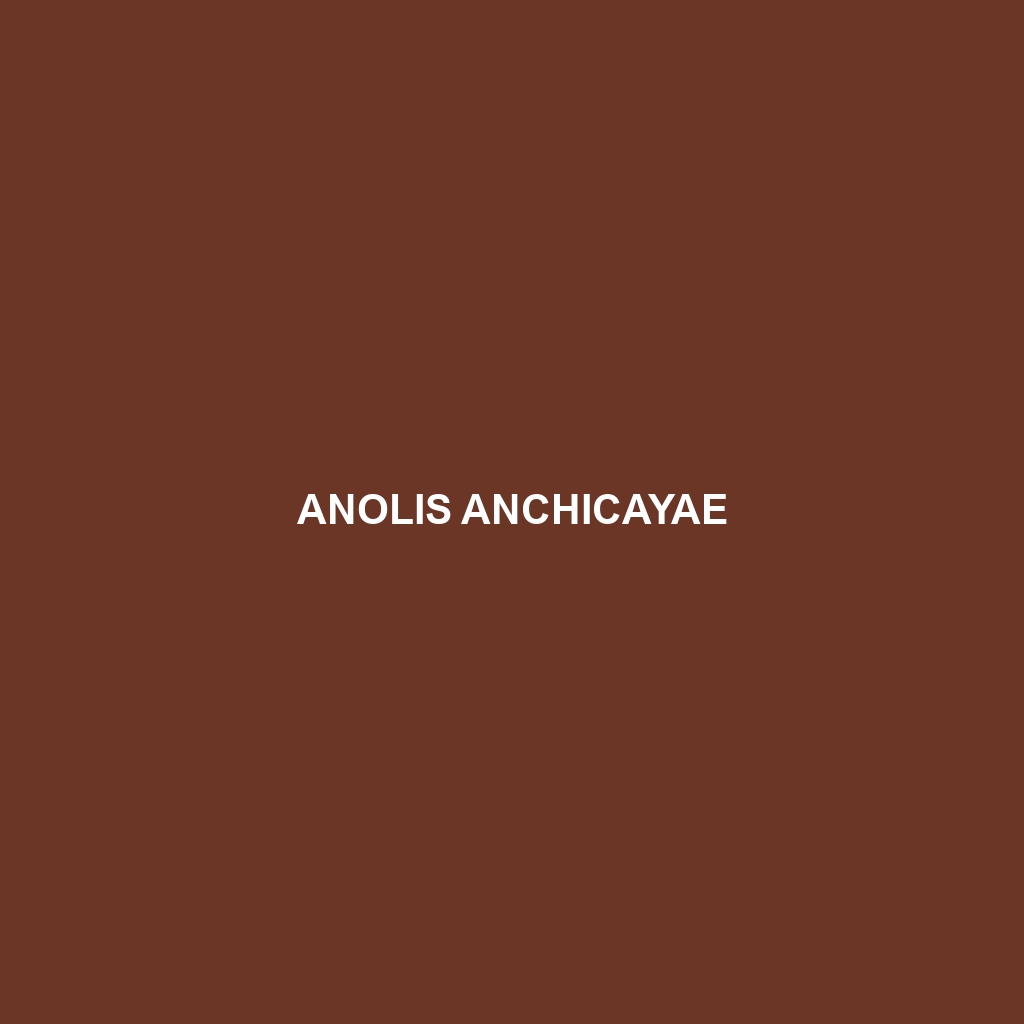Common Name: Anolis anchicayae
Scientific Name: Anolis anchicayae
Habitat:
Anolis anchicayae is primarily found in the humid montane forests of Colombia, specifically in the Andean region. These lizards thrive in warm, moist environments characterized by dense vegetation and a rich understory. They can often be seen basking on tree trunks and foliage, where they take advantage of their arboreal habitat.
Physical Characteristics:
Anolis anchicayae typically measures about 5 to 7 inches in length, making it a medium-sized member of the Anolis genus. They exhibit a striking coloration, usually presenting a vibrant green body with occasional brown markings, providing excellent camouflage against the leaves in their natural habitat. One distinctive feature is their elongated toes, which help them cling to various surfaces, and their dewlap, which is used in communication and courtship displays.
Behavior:
This species is known for its active and territorial behavior. Males often engage in displays of dominance by extending their colorful dewlaps and performing push-up displays. Anolis anchicayae is diurnal, spending its days foraging and basking in sunlight, while being mostly inactive during the night. Their quick movements and ability to blend into their surroundings make them adept at avoiding predators.
Diet:
Anolis anchicayae primarily feeds on a varied diet consisting of insects, such as crickets, flies, and beetles. They are opportunistic feeders and also consume small invertebrates found in their environment. Their feeding habits contribute significantly to controlling insect populations within their habitat, making them an essential component of the ecosystem.
Reproduction:
Reproduction in Anolis anchicayae typically occurs during the warmer months when food is abundantly available. Males display courtship behaviors to attract females, which include head bobbing and displaying their bright dewlaps. After mating, females lay one or two eggs in a hidden location, with incubation lasting about 30 days before the hatchlings emerge.
Conservation Status:
Current assessments show that Anolis anchicayae is classified as Vulnerable due to habitat loss from deforestation and fragmentation. Efforts are underway to monitor populations and protect their natural habitats in Colombia.
Interesting Facts:
Anolis anchicayae exhibits remarkable adaptability, allowing it to thrive in various microhabitats within its montane forest environment. This species is also known for its unique ability to change its body color slightly for camouflage, providing both protection from predators and increased success in hunting.
Role in Ecosystem:
As a predator of insects and a prey species for larger animals, Anolis anchicayae plays a vital role in its ecosystem. They help maintain the balance of insect populations and serve as a food source for birds and other predatory species. Their presence is critical for ecological health, making them important indicators of environmental changes in their habitats.
